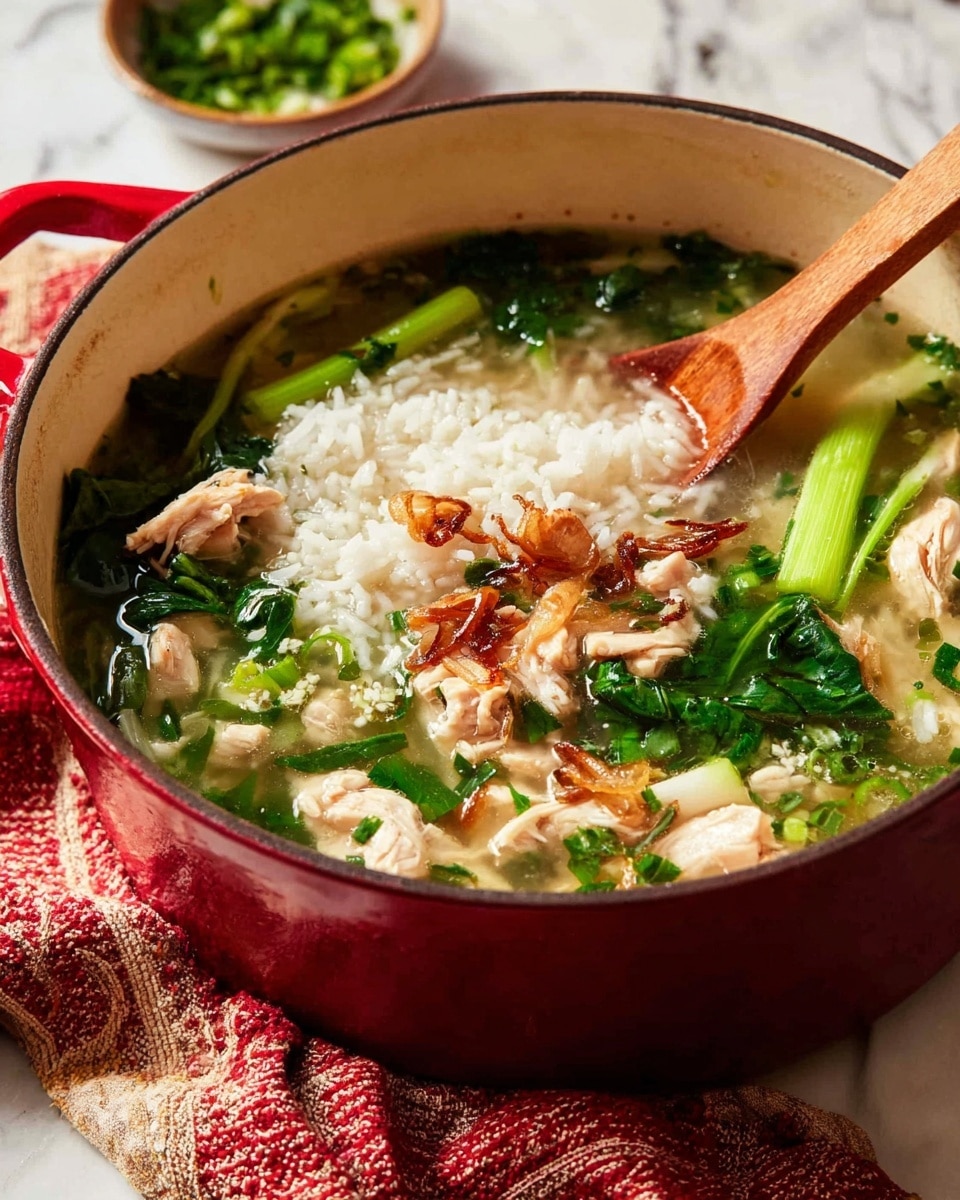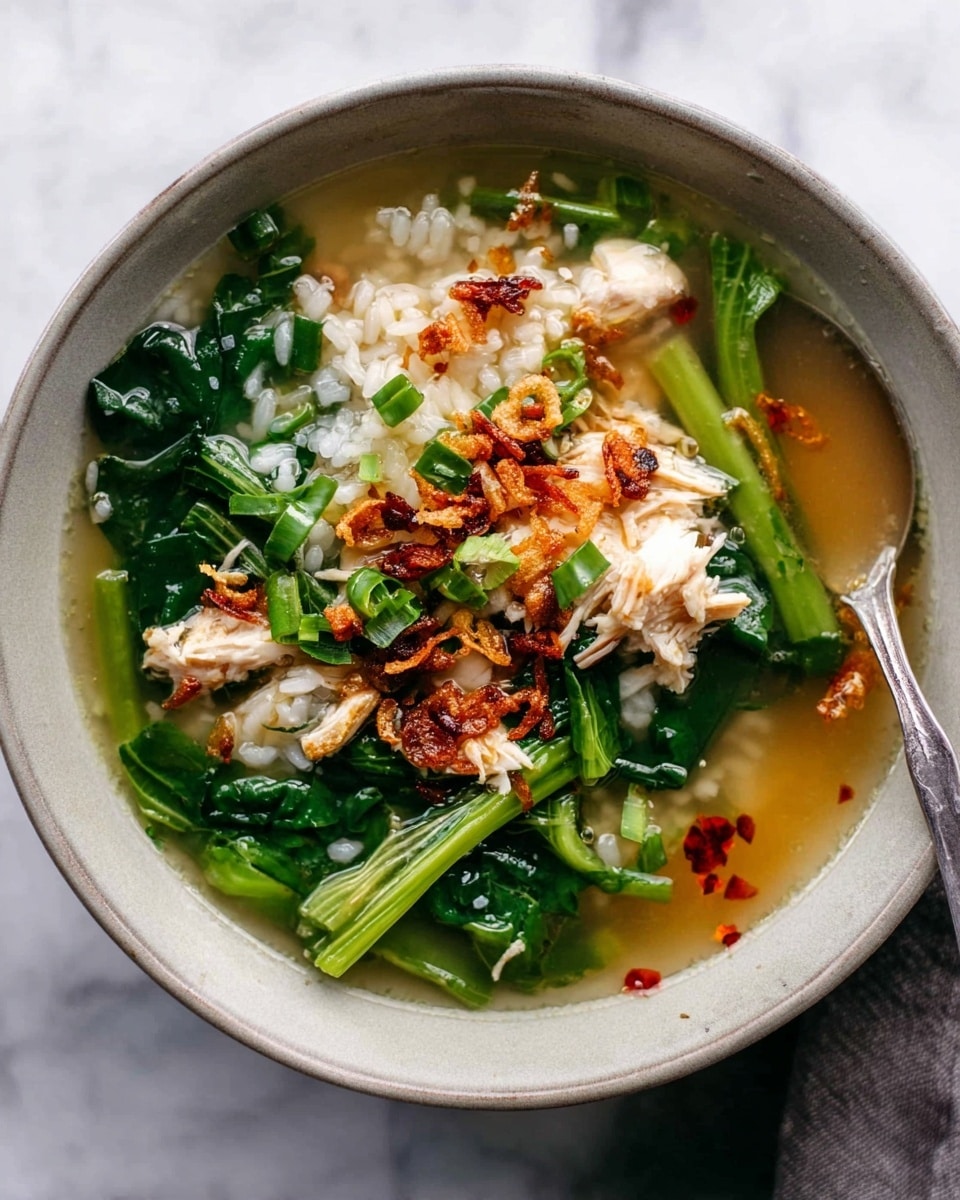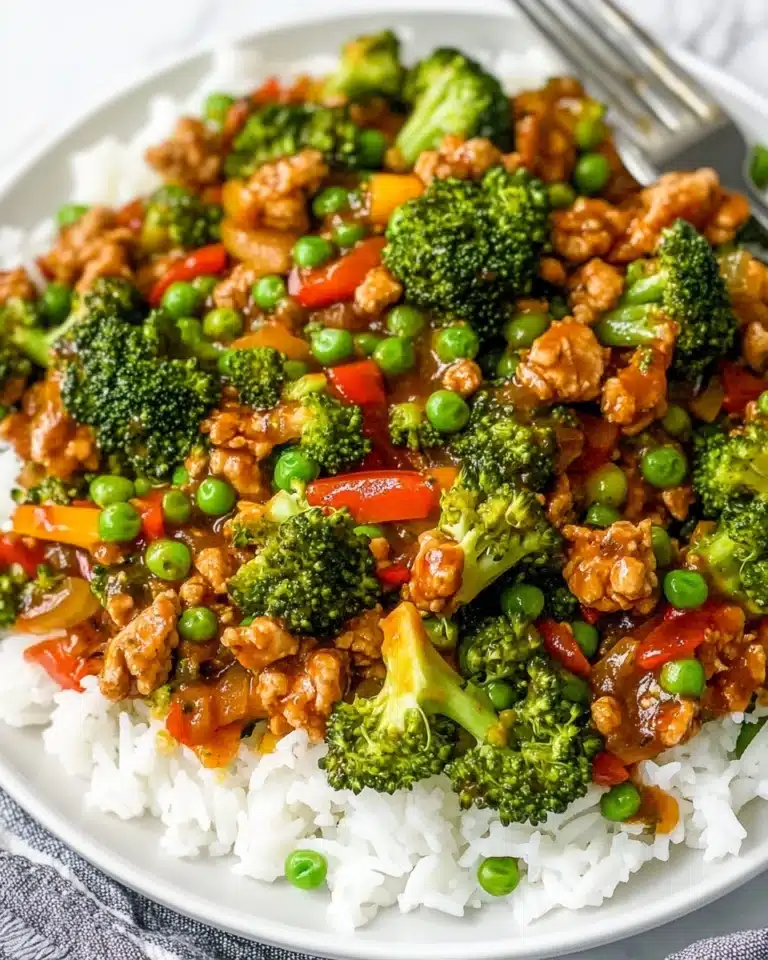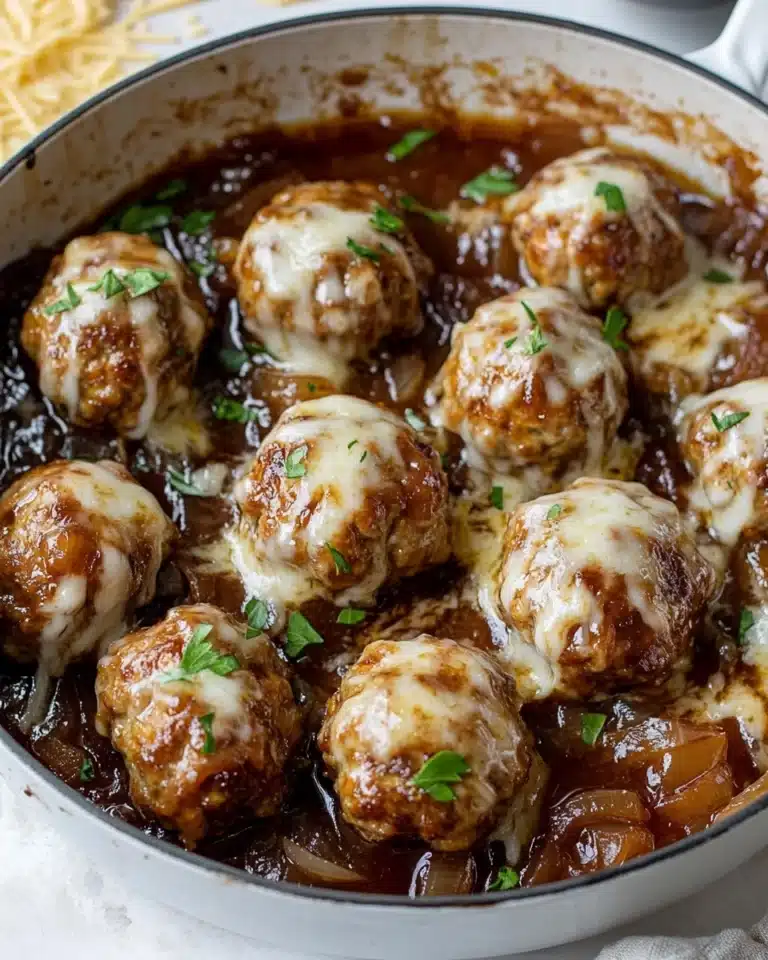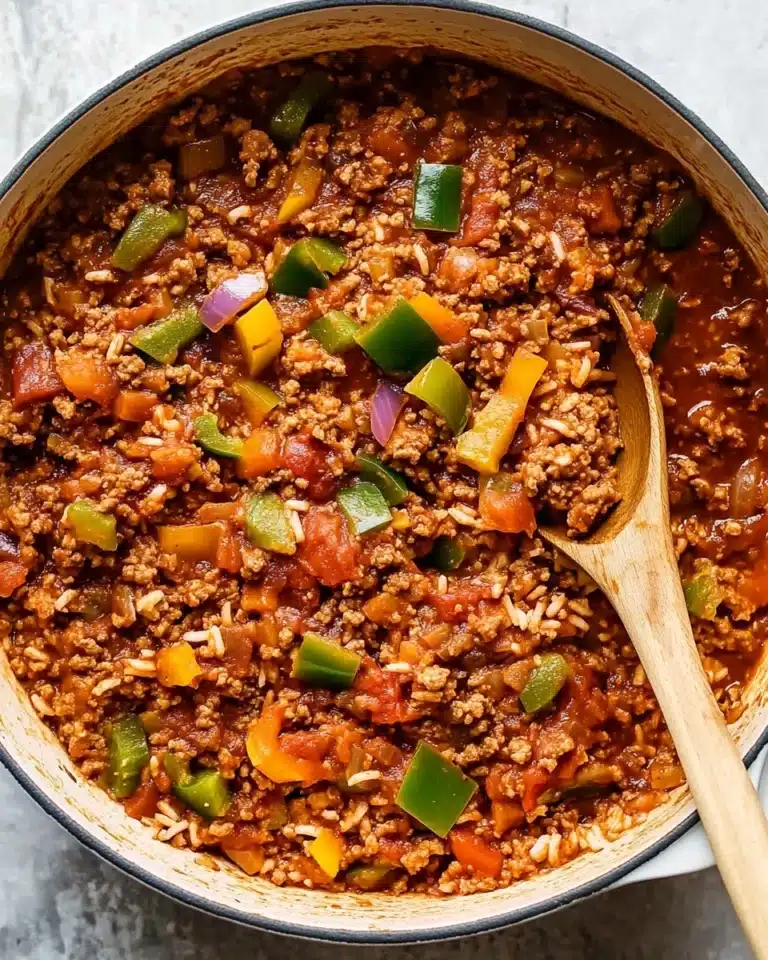I absolutely love making this Chinese Rice Soup with White Fish and Vegetables Recipe whenever I want something comforting, nourishing, and light all at once. It’s one of those dishes that feels cozy on a chilly evening but also fresh enough to enjoy year-round. The gentle flavors of the broth enriched by Chinese cooking wine, combined with tender white fish and crunchy vegetables, make it a perfect meal for when you need a little pick-me-up without anything too heavy.
When I first tried this soup, I was amazed by how effortlessly the ingredients come together to create something so satisfying. You’ll find that this Chinese Rice Soup with White Fish and Vegetables Recipe is great for busy weeknights—you can have it on the table in under 30 minutes, and it’s packed with wholesome goodness. Plus, it’s incredibly flexible, so you can adapt it based on what veggies or protein you have on hand.
Why You’ll Love This Recipe
- Quick & Easy: Ready in just about 15 minutes, making it perfect for busy nights or quick lunches.
- Comforting Yet Light: A soothing soup that’s gentle on your stomach but full of flavor and nutrition.
- Versatile Ingredients: You can swap veggies or proteins depending on what you have, keeping things fresh and interesting.
- Authentic Flavor Boost: The Chinese cooking wine and toasted sesame oil elevate this dish beyond plain chicken broth.
Ingredients You’ll Need
The ingredients for this Chinese Rice Soup with White Fish and Vegetables Recipe are simple but come together like magic. Choosing quality chicken stock and fresh white fish really makes a difference, and picking the right veggies ensures everything cooks perfectly together.
- Chicken stock/broth: Use low sodium to control salt levels; I love Campbell’s brand for its clean flavor.
- Garlic cloves: Smash instead of mincing for a subtle infusion that you can easily remove if you prefer.
- Ginger piece: Fresh ginger sliced helps add warmth and a slight zing without overpowering.
- Light soy sauce: Seasons without changing the broth’s color; avoid dark soy to keep it clear.
- Chinese cooking wine: The secret ingredient that transforms store-bought broth into restaurant-quality soup; dry sherry works as a substitute.
- Sesame oil: Toasted variety gives a rich nutty aroma; totally optional, but I recommend it!
- White pepper: Mild heat and earthiness; if unavailable, black pepper or none at all is fine.
- Uncooked white rice: Jasmine or any medium/long grain rice works well; avoids clumping and over-thickening.
- Choy sum: Chinese leafy green that’s crisp and mild; separate stems and leaves for cooking times.
- White fish fillets: Firm fish like cod or snapper cut into cubes; delicate fillets require gentle handling.
- Green onion: Finely sliced to sprinkle for freshness and color.
- Toppings: Crispy fried shallots, crunchy fried noodles, or chili oil add texture and layers of flavor.
Variations
One of the reasons I keep coming back to this Chinese Rice Soup with White Fish and Vegetables Recipe is how easy it is to tweak for different moods or what’s in my fridge. You can add or swap vegetables, change the protein, or even boost the broth’s flavor with a few creative touches.
- Protein swaps: I’ve tried using prawns, chicken, or even firm tofu, and it works beautifully each time; just adjust cooking time accordingly.
- Vegetable variations: Bok choy, gai lan, or even sliced zucchini can add different textures and flavors based on what I have fresh.
- Spice it up: Adding a spoonful of chili paste or a few slices of fresh chili gives the soup a lovely kick, perfect for cooler nights.
- Broth enhancements: Sometimes I toss in a star anise or whole green onion during simmering for an extra layer of aroma.
How to Make Chinese Rice Soup with White Fish and Vegetables Recipe
Step 1: Create a Flavor-Packed Broth
Start by combining the chicken stock, water, light soy sauce, Chinese cooking wine, smashed garlic cloves, and ginger slices in a small pot. Place it over high heat with a lid on until it just begins to simmer. Then, reduce to medium and let it gently simmer for about 5 minutes so all those wonderful flavors can meld together. This gentle simmering is key—too vigorous, and you’ll risk losing those delicate aromatics.
Step 2: Cook the Rice Until Tender
Next, add your uncooked white rice straight into the simmering broth. Keep the pot uncovered and cook it at a gentle bubble—not a rolling boil—for around 10 minutes. I learned early on that keeping the heat moderate prevents the rice from sticking to the bottom or cooking unevenly. You want the grains tender but still holding their shape, which makes the soup feel heartier without being mushy.
Step 3: Add Fish and Vegetables
Once the rice is nearly cooked, gently stir in the white fish cubes and the choy sum stems. Let everything simmer together for about 2 minutes until the fish is just cooked through and the stems have softened slightly but still have a bit of bite. Be careful not to over-stir here—the fish is delicate and can break apart if handled too roughly.
Step 4: Finish with Leaves and Seasoning
Finally, fish out the garlic and ginger pieces to keep the broth clear. Toss in the choy sum leaves—they’ll wilt almost instantly—and drizzle with sesame oil and sprinkle with white pepper. Give it a gentle stir, then serve immediately. This last step adds freshness and that irresistible nutty depth from the sesame oil.
Pro Tips for Making Chinese Rice Soup with White Fish and Vegetables Recipe
- Use Fresh Fish: Fresh, firm white fish fillets hold up better and give the soup a cleaner flavor—frozen sometimes becomes mushy.
- Gentle Simmer: Keep your broth bubbling gently, not boiling hard, to avoid breaking apart the fish and to keep rice texture perfect.
- Don’t Rush Rice Cooking: Patience here pays off; proper rice texture creates a smooth, comforting soup rather than a gluey mess.
- Toppings Are Game Changers: Crispy shallots or fried noodles add amazing crunch and flavor contrast that elevate the whole bowl.
How to Serve Chinese Rice Soup with White Fish and Vegetables Recipe

Garnishes
I’m a huge fan of topping this soup with crispy fried shallots and crunchy fried noodles—they bring texture and a bit of indulgence to an otherwise light dish. A drizzle of chili oil or a sprinkle of fresh sliced green onion also brightens it up wonderfully. Honestly, even without toppings, it tastes fantastic, but those little extras make it feel special.
Side Dishes
This soup pairs beautifully with simple steamed greens or a small side of stir-fried vegetables to keep the meal balanced and fresh. For extra heartiness, I’ll often add a side of steamed bao buns or pickled vegetables to cut through the mildness of the broth. You really can keep it simple or go fancier depending on the occasion.
Creative Ways to Present
For a special dinner, I like to serve the soup in pretty ceramic bowls with a side platter of garnishes for everyone to add their own crunchy or spicy toppings. Using edible flowers or thin herb sprigs like cilantro adds a pop of color and freshness. Sometimes, I even swirl a bit of homemade chili oil just before serving to make it look as good as it tastes.
Make Ahead and Storage
Storing Leftovers
When storing leftovers, I like to keep the rice and broth separate if possible—using a slotted spoon to scoop the rice out first. This way, the rice doesn’t soak up all the broth and become overly thick or mushy in the fridge. Stored separately, both components last about 4 days in the refrigerator.
Freezing
I’ve tried freezing the broth alone with excellent results; it freezes well and reheats easily. I usually avoid freezing the whole soup with rice and fish together because the texture can get grainy or rubbery after thawing. When freezing, store the fish separately if possible or add fresh fish when reheating.
Reheating
When reheating leftovers, gently warm the broth over low to medium heat and stir occasionally. If you stored rice separately, add it in once the broth is hot and let it warm through without overcooking. Adding fresh vegetables or an extra drizzle of sesame oil before serving refreshes the flavors beautifully.
FAQs
-
Can I use other types of fish in this soup?
Absolutely! Firm white fish like cod, snapper, or halibut work best because they hold their shape during cooking. Salmon and trout can also be used for their mild flavor. Avoid oily or very delicate fish, as they can break down too much or overpower the soup.
-
What can I substitute if I don’t have Chinese cooking wine?
Dry sherry is a great substitute and mimics the depth of Chinese cooking wine closely. Japanese sake or mirin also work well. If avoiding alcohol, reduce the soy sauce slightly and add a tablespoon of oyster sauce to boost umami flavors.
-
Is it okay to use pre-cooked chicken instead of fish?
Yes! You can easily swap in cooked chicken—chop it up and add it to the soup at the end just to warm through. This keeps the chicken tender and prevents overcooking.
-
Can I make this recipe vegetarian?
Definitely. Simply use vegetable broth instead of chicken stock and replace the fish with firm tofu. Add plenty of vegetables to keep the soup hearty and satisfying. Toasted sesame oil and soy sauce will still give you rich, layered flavors.
-
How do I prevent the rice from getting too mushy?
Cook the rice at a gentle simmer rather than a rolling boil, and don’t stir too vigorously. Also, avoid cooking the rice too far in advance if possible; it’s best eaten shortly after preparation for the best texture.
Final Thoughts
This Chinese Rice Soup with White Fish and Vegetables Recipe has become one of my go-to comfort foods because it’s just so simple to make and hits all the right notes of flavor, texture, and nourishment. I love how the fresh fish and greens balance the soothing rice and flavorful broth, making every spoonful a delight. I really hope you give this recipe a try—you’ll enjoy how quickly it comes together and how wonderfully satisfying it is without any fuss. Trust me, it’s a kitchen winner you’ll reach for time and again!
Print
Chinese Rice Soup with White Fish and Vegetables Recipe
- Prep Time: 5 minutes
- Cook Time: 10 minutes
- Total Time: 15 minutes
- Yield: 3 – 4 servings
- Category: Soup
- Method: Stovetop
- Cuisine: Chinese
Description
Chinese Rice Soup is a comforting and flavorful broth-based soup featuring tender white fish, aromatic ginger and garlic, and delicate choy sum, infused with soy sauce and Chinese cooking wine. Perfectly balanced with simple ingredients and customizable toppings, this soup is light yet satisfying, ideal for a quick and nourishing meal.
Ingredients
Broth
- 1 litre / 32 oz chicken stock/broth, low sodium
- 1 cup water
- 2 garlic cloves, smashed
- 1.5 cm / 1/2″ ginger piece, cut into 3 slices
- 1 1/2 tbsp light soy sauce
- 1 1/2 tbsp Chinese cooking wine
- 1/4 – 1/2 tsp toasted sesame oil (optional)
- 1/4 tsp white pepper
Add-ins
- 3/4 cup uncooked white rice (long grain, medium grain, short grain, or jasmine)
- 3 stems choy sum, cut into 2cm / 1″ lengths, stems separated from leaves
- 250g / 8 oz white fish fillets, cut into 2.5cm / 1″ cubes (firm white fish like snapper, sole, hake)
- 1 green onion, finely sliced
Toppings
- Crispy fried shallots
- Crunchy fried noodles
- Chilli oil or paste
Instructions
- Combine broth ingredients: Place chicken stock, soy sauce, Chinese cooking wine, smashed garlic, and ginger slices in a small pot over high heat.
- Simmer to infuse: Cover with a lid, bring the mixture to a simmer, then reduce heat to medium and let it simmer gently for 5 minutes to allow the flavors to infuse into the broth.
- Add rice: Add the uncooked rice and cook uncovered for 10 minutes, ensuring the broth surface is gently bubbling to cook the rice properly.
- Add fish & stems: Introduce the fish cubes and choy sum stems into the pot, cooking for 2 minutes until the fish is just cooked through.
- Remove aromatics: Pick out the garlic cloves and ginger slices from the soup to keep the broth clear and clean-tasting.
- Finish with leaves and seasoning: Stir in the choy sum leaves which will wilt instantly, then add toasted sesame oil (if using) and white pepper. Serve the soup immediately, garnished with sliced green onion and your choice of toppings.
Notes
- Use a good quality low sodium chicken stock or broth for the best flavor. Avoid stock powders as they can taste artificial.
- Smashed garlic allows flavor to infuse the broth without leaving bits in the soup. You may remove them after simmering.
- Light soy sauce seasons the broth without adding color; avoid dark soy sauce which is too strong and discolors the soup.
- Chinese cooking wine is essential for authentic flavor. Dry sherry makes a good substitute. Without alcohol, reduce soy to 2 tsp and add 1 tbsp oyster sauce for umami.
- Use toasted sesame oil for a more intense nutty flavor rather than untoasted sesame oil.
- Any common white rice works well, including jasmine and basmati. Brown rice requires longer cooking times and adjustments.
- You can substitute the choy sum with other Asian greens like bok choy or gai lan, adjusting cooking times as needed.
- Firm white fish like snapper, sole, or hake work best. Alternatives include salmon, trout, prawns, or chicken prepared with velveting technique.
- Crispy fried shallots and crunchy noodles add texture and flavor but are optional.
- Extra flavorings such as star anise or whole chili can be added to the broth to vary taste.
- Leftovers: store rice and broth separately. Keeps up to 4 days refrigerated or 3 months frozen.
- Nutrition values exclude toppings; calculated per 4 servings.
Nutrition
- Serving Size: 1 bowl (approx. 300 ml)
- Calories: 180
- Sugar: 1 g
- Sodium: 450 mg
- Fat: 3 g
- Saturated Fat: 0.5 g
- Unsaturated Fat: 2 g
- Trans Fat: 0 g
- Carbohydrates: 28 g
- Fiber: 1 g
- Protein: 12 g
- Cholesterol: 35 mg

